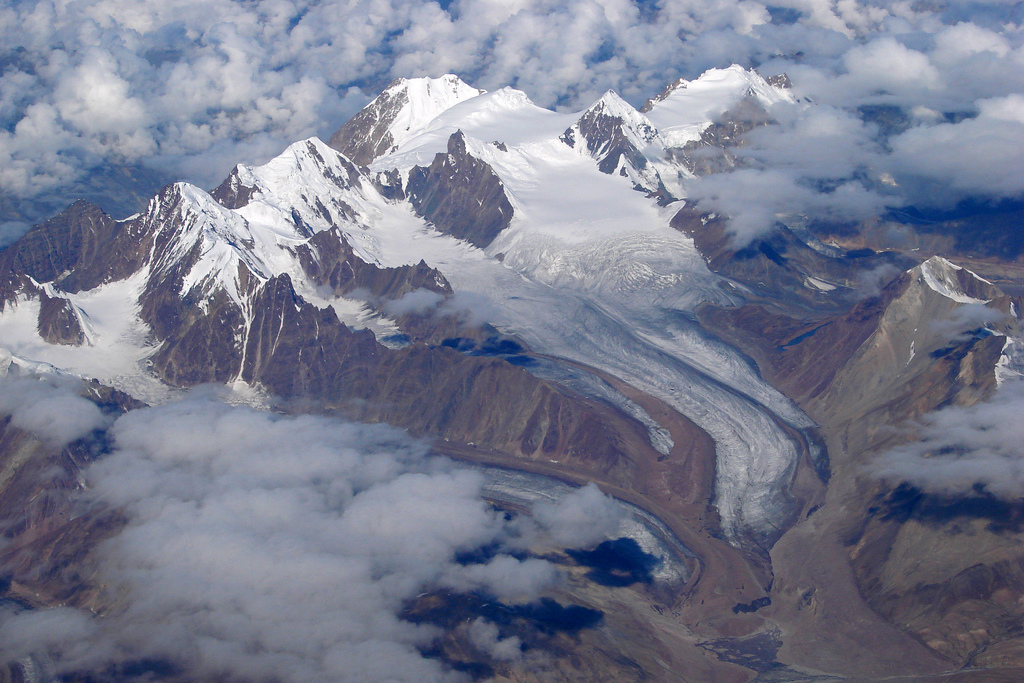The Himalayas: Source of life for half the world’s population
One look at the mighty landscape and towering snow-peaks, and we are mesmerized forever. Stunning mountains, dense temperate forests, dazzling snow that reflects the sunlight, deep alluring chasms, winding rivers, rich varied bio-diversity and innumerable legends; all these describe the incredible Himalayas. ‘Hima’ meaning snow and ‘Alaya’ meaning ‘abode’ in Sanskrit, the mountains are a major part of the lives of Tibetians, Indians, Nepalis and many others who live in proximity to these grand mountains

This photo “The Great Himalayas” @flickr from Karunakar Rayker
made available under an Attribution license
Be it the Shivaliks (the foothills of the mountains) or the highest peaks (Mount Everest, Kanchenjunga and others), the Himalayas have been an inspiration to poets, a fascination to tourists and a source of life to more than half the population on earth.
A source of Livelihood
According to the World Wildlife Federation (WWF), the combined drainage basin of the Himalayas is home to some 3 billion people in 18 countries, almost half the world’s population. The mountain range is the source of 6 of Asia’s great rivers, including the Yangtze, Indus and Ganges and home to thousands of species of animals and plants. The importance of perennial rivers like Ganges and Brahmaputra is well known and billions depend on the great Himalayan basin for agriculture. . With nearly 15000 glaciers, several lakes, streams and small rivers this range hosts the source of livelihood for countless people
Bio-diversity of the Himalayan range – Flora
The Himalayan range is a unique geographical area where rich bio-diversity exists. There is a permanent ‘snow line’ at the highest altitude which gives rise to perennial rivers like the Ganges and the Brahmaputra. The altitude, rainfall and soil conditions along with snow results in distinct and diverse flora and fauna.
Oak forests, Pine forests, apple trees, dwarf pomegranate trees, orchids, deodar trees, blue bamboos, coral berry plants, Himalayan birches and several herbal plants are found here..
Bio-diversity of the Himalayan range – Fauna
Whether it is the elusive endangered mountain snow leopard or the unique Himalayan marmot, these majestic mountains house a number of reptiles, mammals, birds and insects like the Grey wolf, Tibetan fox, Eurasian lynx, Asian gold cat, Red panda, Grey languor and Wood mouse apart from Jackdaws, Ravens, Bar-headed geese and Peacocks which add a colorful diversity and beauty to this region.
Two unique reptiles found here are the Indian Rock Python and Tibetian Spring snake.
Recently, the melting of glaciers and erosion of the soil of this mountain range has been a reason of worry to the entire world. Efforts to conserve the bio-diversity and ecological balance of the Himalayas have been initiated on a global scale with conservationists and scientists from various domains joining hands. It’s an endeavour that will have a great impact on the future of human kind itself since it will work towards preservation of this beautiful region which is a giver of life to countless species of life, including human beings.


